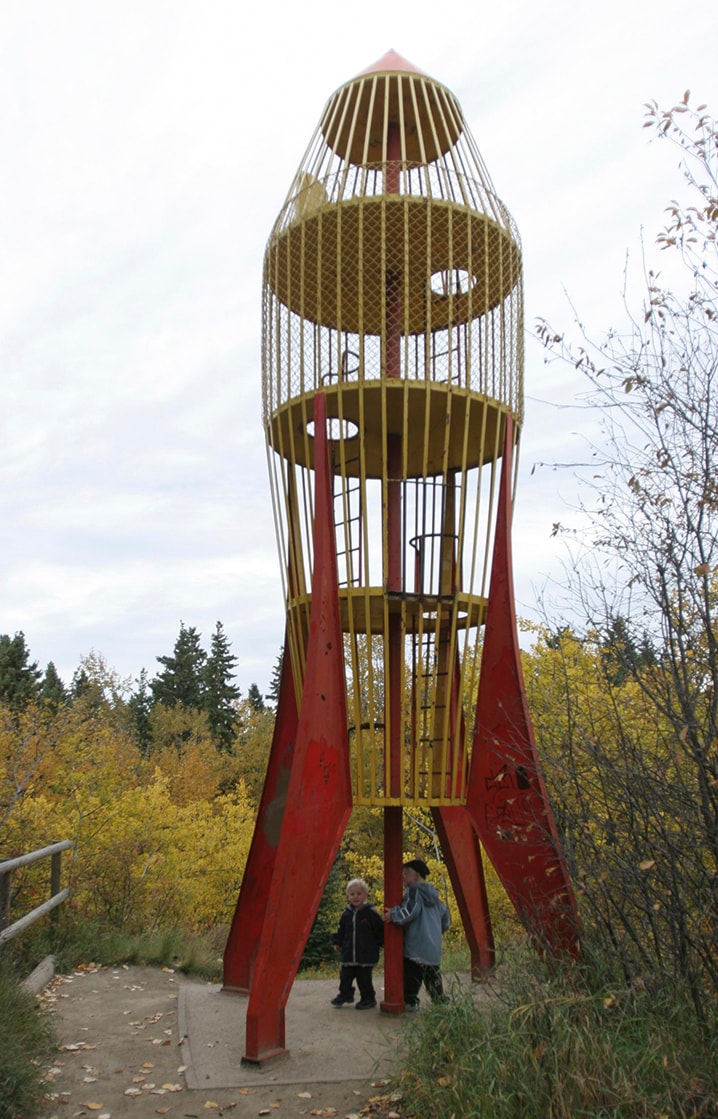Somewhere in my mental landscape of Red Deer, the faded Windsor and Arlington Hotels are still staring each other down across 51st Avenue, like pushy old rivals.
Now, I know these blocky and indecorous structures don’t exist anymore.
The Windsor Hotel burned down in 1994 (I reported on the inferno that attracted a row of spectators on lawn chairs, as if at a giant weenie roast). And the dilapidated Arlington was intentionally pulled down by the City of Red Deer five years ago and turned into an unscenic parking lot.
But somehow these old buildings still stand tall in my mind, as solid symbols of Red Deer’s downtown.
Surely it’s a sign you’re getting on when your mental landscape no longer matches the physical one — for the same thing happens whenever my thoughts turn to Winnipeg.
When I think of the city I largely grew up in, friends are still meeting up at the foot of the Timothy Eaton statue in the downtown Eaton’s store — even though both disappeared to make way for an shiny new arena long after I moved away in 1982.
And while revisiting Toronto — where I studied fashion design before switching to journalism later in the 1980s — I’m always fleetingly surprised the Spadina area is no longer lined with cubbyhole button stores and fabric shops filled with dusty rolls of material. Ever since free trade stamped out much of Canada’s garment industry, they have been replaced by trendy boutiques, which are chic-er, for sure, but less interesting.
The bittersweet inevitability of most traces of the 1920s to 1980s disappearing from our cities had become an accepted fact of life. Change happens, I reasoned. Nothing ever stays the same.
But then my family drove through Medicine Hat this summer. And during a stopover in the Southern Alberta city on the way to a camping trip in Cypress Hills, I was overcome by an emotion I had a hard time pinpointing at first: nostalgia.
Upon re-entering this place I hadn’t seen since childhood, I felt like we had time-travelled back to 1975 and I was still stuck with my parents and ill-behaved siblings in a pale-blue station wagon en route to the annual family holiday grounds in Banff.
Here were the old-style motels I remembered, with their rickety exterior balconies and metal stairs. Here were business signs featuring a stylized star-burst, a kitschy cartoon cowboy wielding a lasso, and other motifs associated with mid-century modern design.
One Medicine Hat motel is even still called the Satellite, according to its Jetsons-like signage visible from the Trans-Canada Hwy.
From the patchy stonework and vintage awnings of downtown stores, to leafy streets full of large, old homes with front porches, all the things I thought were forever gone were still around.
And I could just about cry.
This unexpectedly emotional reaction to Medicine Hat got me thinking: Why have virtually all vestiges of the latter part of the last century been gleefully stripped from cities, such as Red Deer, which became prosperous enough to get regular facelifts.
Why is ‘history,’ especially here in the West, perceived to be only pioneer history — a time most of us, who are still living, have no direct attachment to and no personal remembrance of?
What about valuing our more immediate history?
Is a preserved building from 1900 going to be that much more interesting in the long run than one from 1950 or 1970? I doubt it, since authentic structures from the mid-to-late last century will probably be harder to find in future. How long before someone suggests pulling down even the more iconic examples, such as Calgary Tower or the Saddledome?
I understand (and have even participated in) the mocking contempt reserved for the shag-carpet 1960s and ’70s, with their gold-coloured kitchen appliances, eight-track cassette players and macramé plant hangers. No doubt, a lot of misguided design concepts did emerge and spill over into architecture of that period.
But doesn’t that frugly quirkiness make the decades memorable — or even fun, in the same way bulldogs or those weird hairless Chihuahuas are so unlovely that they’re cute?
Obviously, I’m not alone in feeling a pang for last-century style. Switch on your flat-screen TV and you’ll see a plethora of reality shows catering to nostalgia for times past. Shows about toy and comic collectors, furniture restorers and car buffs, appeal to a wide audience of viewers who are interested in that era.
Alongside Game of Thrones DVDs, retailers are now offering throwback serials, such as The Mod Squad and I Dream of Jeannie. While it’s hard to imagine those tame shows still finding an audience in this cynical age, stores like Costco wouldn’t be selling them if customers weren’t buying.
Lately, music shops are even being overtaken by vinyl records again. Even though you have to flip them over every 20 minutes, records seem to retain a certain retro cool.
My own cultural tastes are firmly rooted in the 21st-century, where I live. But whenever I think of the places I’ve been, my inner landscape continues to be littered with anachronisms.
For instance, somewhere high above Red Deer’s Kin Kanyon, a space-age kids’ climbing apparatus still looms large in my mind.
Although this play-time rocket ship disappeared from the hill one day, like so much scrap iron (deemed unsafe, like the too-tall slides and merry-go-rounds we miraculously survived as children), it’s still part of our living, collective memory — for now.
lmichelin@www.reddeeradvocate.com
